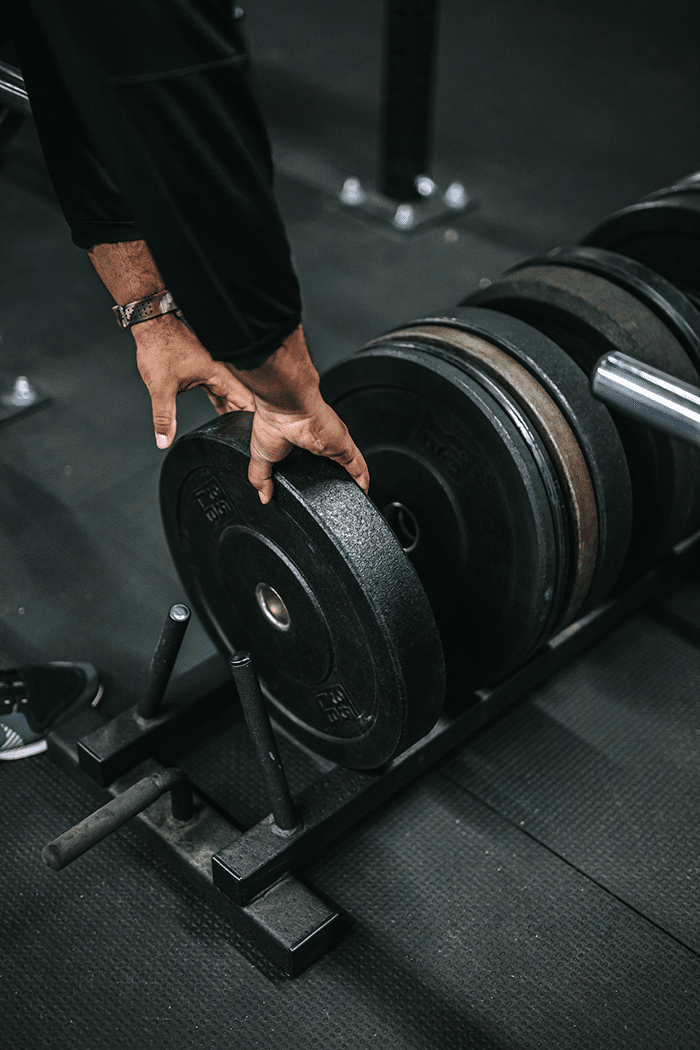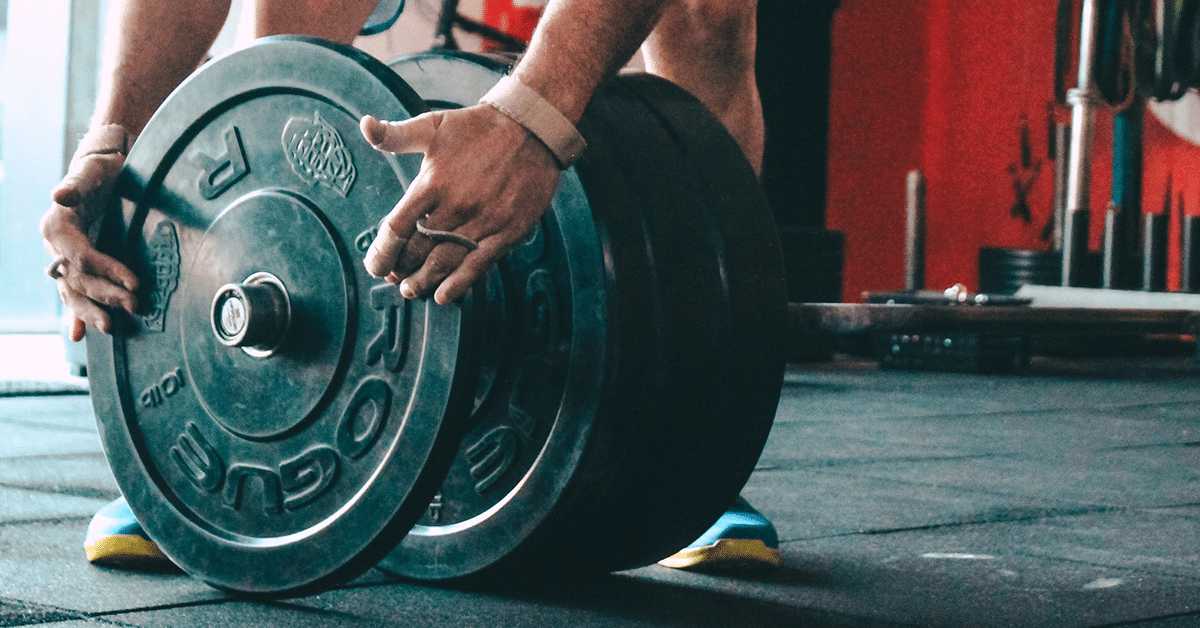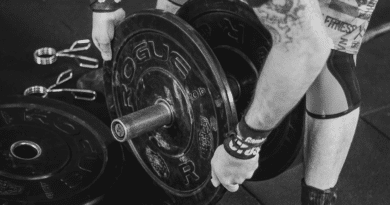How to T Bar Row – Technique, Benefits, Variations and Muscles Worked
This extensive guide to the T Bar Row will teach you how and why to include this excellent exercise in your training.
What is the T Bar Row?
The T Bar Row is a barbell pulling exercise that builds (primarily) muscle mass and strength for the back and arms.
Different to other forms of Rows it is much safer because it doesn’t place the spine and back in any compromised positions.
It also allows you to use a neutral grip. This means with the palms facing each other. This is, biometrically speaking, the strongest pulling grip so you can rack up the weight and test and improve your body.
For example, with the Bent Over Row the palms face down in a pronated position.
What is the Best Rogue Dip Station?
Additionally, because you use two hands, the T B Row also allows you to shift more weight than with the Dumbbell Row as well.
Chin Ups and Lat Pulldowns are great exercises to widen the lats, but heavy rows are the best way to add pure mass.
Muscles Worked by the T Bar Row
The primary muscles worked in a T B Row are:
- Latissimus dorsi
- Trapezius
- Posterior deltoid
- Rhomboids
Secondary muscles worked in a T-Bar Row:
- Biceps
- Forearms
- Grip
- Spinae erector
- Hamstrings
- Glutes
- Core muscles
Benefits of the T Bar Row
Benefits of the T Bar Row include:
A Stronger Upper Back
The pulling range of motion will significantly strengthen your back. This will also provide improvements to other pulling exercises such as Pull Ups and Deadlifts.
Enhanced Strength
The T Bar Row will heighten your upper body strength in general.
Better Posture
During the movement the athlete must maintain a neutral spine and lift the load with intensity, strength and purpose. In the process you will strengthen the movement patterns of a strong, healthy back with great posture.
Better and Thicker Muscle Definition
Rows build mass. If you want more muscle and hypertrophy is your goal then add the TB Row into your training.
Go for 3-5 sets of 8-12 reps with rest periods of 30-45 seconds for the best results.
Better Core Stability
The exercise demands that the core be kept stabilised at all times, with as little movement as possible. This develops significant core stability.
Increased Core Strength
In a similar vein as above, the TB Row is a great core exercise as the midline spends a great deal of time under tension throughout each set.
Improved Functional Strength for Life
The TB Row has powerful benefits for outdoor sports such as kayaking and rowing.

A strong, stable back is a valuable asset for long hikes, cycle rides and climbing as well.

How to do the T Bar Row
First, we will explain how to do the TB Row with a landmine attachment (usually found in most gyms and Boxes).
Second, we will show you how to set up the TB Row in a garage gym or any other place when a landmine attachment is not available. This is the DIY option.
How to do the T Bar Row with a Landmine Row Attachment
- Load up the barbell with the desired amount of weight
- Stand astride the barbell with a foot on each footplate (or the floor depending on your equipment). Shoulder width apart
- Keeping a straight back, bend forwards and grip the handles or barbell directly beneath you
- Bent the knees slightly to afford maximum stability
- Inhale and brace your core, glutes and grip
- Pull the barbell towards you. Retract and squeeze your shoulder blades together at the top of the movement
- Pause for a second and tense your scapula
- Slowly lower the weight to the starting position
- Exhale at the end of the movement
- Repeat for the allocated number of reps
How to do the T Bar Row without a Landmine Attachment
When it comes to form, repeat the same steps as above.
When it comes to creating a DIY landmine attachment there are a few options.
DIY Landmine Attachment with Bumper Plate
- Place a bumper plate on the floor
- Put the end of the barbell in the hole
- Add another heavy plate over the top to fix the barbell in place
DIY Landmine Attachment with a Tennis Ball
- Cut a slit in an old tennis ball
- Slot it over the end of the barbell
- Slide the barbell into the corner of your garage gym
Training Tips
Maintain Good Form at all Times
Of course, it is important to perform all exercises with proper form but this is especially so with the TB Row. Make sure to keep a straight spine at all times. A rounded back is dangerous and could lead to injury.
Start Light and Build Heavy
If you aren’t sure where to start with the TB Row, add less weight than you think you should use to the barbell. Build this up over time as your body and confidence adjusts to the movement.

Talk to your Lats
This exercise is a great way to build a strong mind muscle connection. Pay attention to your lats and upper back and make sure to squeeze them as tightly as you can at the top of the movement.
T Bar Row Alternatives
These TB Row alternatives will work similar muscles in a slightly different way. They are all great additions to any back or upper body workout.
- Yates Row
- Dumbbell Row
- Pendlay Row
- Underhand Barbell Row
- Banded Row
- Seated Close Grip Cable Row
- TRX Row
- Seal Row
- Meadows Row
- Iso Lateral Row
- Inverted Row
- Barbell Row
T Bar Row Variations
Most TB Row variations come down to the equipment that you have available.
You can also switch the grip (wide and narrow, pronated and supinated) in order to vary the stimulus for your body.
What is a Good Weight for T Bar Rows?
This is relative to the bodyweight and training history of the lifter.
So, here are some rough averages with a 180-pound athlete:
- Novice should be able to lift about 140 pounds
- Beginner should aim for around 93 pounds
- Intermediate male athlete of the same weight will lift around 200 pounds
- Advanced athlete should lift 272 pounds or more
FAQs
Scroll through our TB Row FAQs to further improve your knowledge.
What is T Bar Row Good For?
The TB Row is great for strengthening and building muscle for your back. It works your upper, middle and upper back muscles, as well as the arms, shoulders, core and grip. Additionally, it enhances posture and stability.
Is T Bar Row Good for Back?
Yes, the TB Row is an excellent back exercise. It will help you to construct a thicker, better back, reduce the risk of back injury and improve your posture and spinal health.
What Muscles does the T Bar Row Target?
The TB Row targets the:
- Latissimus dorsi
- Trapezius
- Posterior deltoid
- Rhomboids
Are Rows Better than Pulldowns?
If you only have time for one then choose Rows, but both are useful in their own way. More stability and core strength are required and tested by Rows. Also, they build thicker, dense muscle and are generally harder than Pulldowns.
Pulldowns are great for isolating and “feeling” the movement. They will help the mind muscle connection and are a great option for maximising time under tension for hypertrophy (keep them slow and controlled).
Can you do T B Rows without the Handle?
Yes, you can perform TB Rows without the handle by gripping the barbell itself. Alternate between which hand is at the top and which is at the bottom with each different set.
You can use all kinds of bar and handle attachments to achieve a wide variety of training stimuli.
Do T Bar Rows Work Rear Delts?
Yes, TB Rows do work the rear delts. When programmed alongside other Rowing exercise variations and Rear Delts Flys, they will become a considerable asset in creating powerful rear delts.
Does T Bar Row Work Lats?
Yes, they do work lats. They primarily target the lats but also strengthen many other back muscles such as the teres major, trapezius, and erector spinae.
They also develop the muscles in your arms that perform the pulling, the biceps, brachialis, and brachioradialis and shoulders.
Is T Bar Row necessary?
This type of Row is a highly effective and useful back exercise. I personally always use it as a way to strengthen and improve my back.
The TB row can allow you to achieve greater potential overload. Lifting more weight can potentially lead to greater overload in the upper back, which is great for building strength.
When To Do the T B Row
If you train with a back day then you should do the TB Row after your main compound back exercise (Barbell Row, Deadlift etc) but before isolation exercises such as Rear Delt Flys or Dumbbell Rows.
It is also an exceptionally effective exercise to pair with upper body pushing exercises such as the Bench Press.
Learn More
If you enjoyed this article, learn more about Renegade Rows.





Comments are closed.